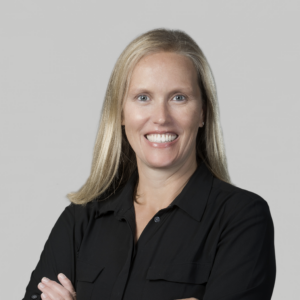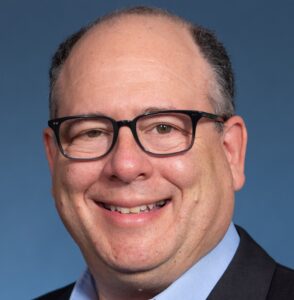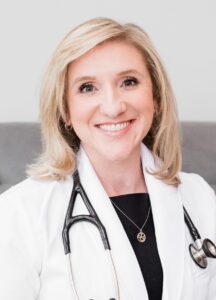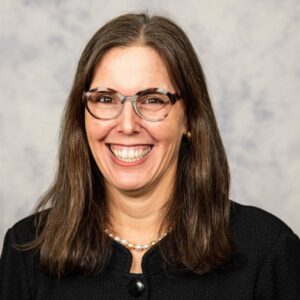In observance of Public Health Week 2024, this review underscores the imperative need for equitable healthcare access across the United States. Especially in expansive rural landscapes, the demand for accessible and equitable healthcare is evident. We will explore the strategic integration of telehealth appointments conducted by lactation consultants and doulas, as well as shed light on the consequential challenges posed by the lack of telehealth coverage by insurance companies. Embark on a journey to explore how telehealth is breaking down barriers and providing a lifeline for rural communities facing the unique challenges of lactation support.
Unraveling the Rural Health Dilemma
Rural communities face unique challenges in accessing high-quality healthcare, highlighted by the 2022 findings from the March of Dimes Maternity Care Desert Report. While not explicitly addressing lactation concerns, the report underscores the overall inadequacy of maternal support nationwide. As featured in the CDC’s 2022 report, it is clear that there has been a substantial decline in breastfeeding during the initial six months of an infant’s life. This underscores the necessity for improved assistance to mothers on their breastfeeding journey, extending beyond the hospital setting well into the postpartum period.
Picture a small town where the nearest lactation consultant is hours away, posing a daunting challenge for new mothers. The lack of accessible support services leaves these women feeling isolated, navigating the intricacies of breastfeeding on their own. This rural health dilemma is not just a statistic; it’s the real narrative of people striving for the best possible start for their infants.
In this landscape with scarce connectivity and limited resources, traditional support falls short. Mothers yearn for expert advice, reassurance, and a sense of community beyond geographic boundaries. Here, telehealth emerges as a beacon of hope, crafting a new story of inclusivity, accessibility, and empowerment.
Geographic Isolation:
Geographically isolated rural areas pose significant barriers for residents accessing healthcare, particularly expectant mothers. As explained in a 2023 Ballard Brief written by David Clove. Residents travel twice as far as their urban counterparts to access healthcare, encountering challenges such as further facility proximity, lack of transportation, and communication barriers. These issues, compounded by socioeconomic factors, emphasize the urgent need for comprehensive healthcare solutions, intensifying struggles, especially concerning lactation.
Scarce Resources:
Geographically isolated rural areas, characterized by extensive distances and low population density, present substantial challenges for expectant mothers accessing healthcare. The logistical hurdles, including limited facility proximity, transportation constraints, and communication barriers, underscore the need for urgent and accessible healthcare solutions, exacerbating difficulties, particularly in lactation support.
Shortage of Medical Professionals:
The shortage of medical professionals, particularly in breastfeeding and prenatal education, poses a critical challenge in rural areas, straining healthcare resources and limiting options for expectant mothers. A National Library of Medicine article reveals the impractical time demands for primary care physicians, which are typically the only available options in rural areas. This further contributes to adverse health outcomes and increased healthcare costs for both mothers and infants.The absence of telehealth and mandated nurse-to-patient ratios compounds the issue, potentially leaving some mothers without adequate support during labor. This substantial deficit in medical professionals, especially in preventative medicine, plays a pivotal role in the widespread healthcare challenge in rural areas.
Insurance Coverage for Telehealth Services:
Insufficient insurance coverage for telehealth services poses a significant barrier, particularly impacting expectant mothers in rural areas as they navigate healthcare challenges. The lack of comprehensive policies for telehealth, covering services like lactation consultants and doula care, creates a substantial obstacle, hindering access to vital virtual consultations. This limitation not only obstructs lactation and doula support but extends to various aspects of maternal care, encompassing routine virtual appointments and preventative measures.
The Potential of Telehealth: Enhancing Maternal Care Access
In an era where Medicaid covers 42% of US births, telehealth lactation providers are adopting an equity-driven approach to enhance maternal care access. Serving as a catalyst, telehealth not only bridges geographical divides but also tackles healthcare disparities for expectant mothers in underserved regions. This innovative solution facilitates virtual consultations, connecting mothers with healthcare providers and delivering essential prenatal care, lactation consulting, and preventive services.
As telehealth becomes more accessible, its potential to reduce healthcare costs and improve overall maternal care is increasingly evident. Engaging in virtual consultations with a doula has been shown to substantially lower C-section rates. A recent study indicates when mothers who have previously undergone a C-section, and engage in two or more doula visits virtually, their odds of having another cesarean are reduced by 60%. (Maven, 2023).
This exciting discovery suggests that virtual consultations have the potential to yield similar positive impacts as in-person visits. We strongly encourage insurance companies to consider incorporating telehealth as a legitimate avenue for care, recognizing its ability to address maternal healthcare challenges and contribute to a more inclusive and cohesive approach.
Strategies for Policy Change: Advocating for Inclusive Telehealth Coverage
Recognizing the distinctive challenges faced by expectant mothers in rural America, this section emphasizes the importance of comprehensive insurance coverage for telehealth services and outlines actionable strategies for policy reform that address the multifaceted healthcare needs of rural communities. Engaging in crucial conversations, fostering community involvement, and forging collaborative partnerships emerge as pivotal strategies.
Advocating for Evidence-Based Lactation and Doula Coverage via Telehealth:
- Promote evidence-based maternal services that harness the transformative capabilities of telehealth
- Highlight success stories of mothers who have obtained access to care through telehealth and have obtained tangible outcomes, resulting in reduced maternal healthcare costs.
- Collaborate with your community partners: healthcare professionals, researchers, and policymakers to develop telehealth guidelines tailored to the needs of expectant mothers in rural areas.
Supporting Telehealth Reimbursement Approaches in Policies
- Survey your healthcare providers and obtain feedback on what they feel an ideal policy would be. (i.e provider type, reimbursement rates, cpt codes, etc.).
- Review policies in neighboring states for barriers and/ or policy replication
- Collaborate with policymakers to create financial incentives for insurance companies that adopt inclusive telehealth coverage.
Expanding Specialized Providers in Maternal Care:
- Advocate for the expansion of specialized telehealth providers focused on maternal care in rural regions (Doula, Lactation Consultants, Midwives, etc.)
- Collaborate with board associations and doula certification organizations to encourage the expansion of RN licensing and Doula certification recognition within their state.
- Propose incentives or grants to attract specialized providers to underserved rural areas, ensuring a robust network of professionals offering comprehensive maternal care services both in person and via telehealth.
Implementation of these strategies actively contributes to reshaping policies that foster inclusive telehealth coverage. This initiative envisions a future where maternal care in rural America is more accessible and equitable, aligning with the goals and responsibilities of legislation and policy makers.
An Evolving Landscape of Unity and Accessible Care
As we conclude our exploration of the transformative landscape of telehealth in maternal care, a vision of unified and accessible healthcare, particularly in rural America, takes center stage. The collaborative efforts of dedicated advocates and individual initiatives have not only highlighted challenges in rural care deserts but have also charted a strategic path forward. Despite obstacles, the steadfast belief endures that every expectant individual deserves comprehensive and equitable healthcare, regardless of their location or financial circumstances.
If you would like more information regarding how you can advocate and build health equity for your members through telehealth, please email our Strategic Partnerships team at strategic.partnerships@aeroflowinc.com or schedule time with us below.















